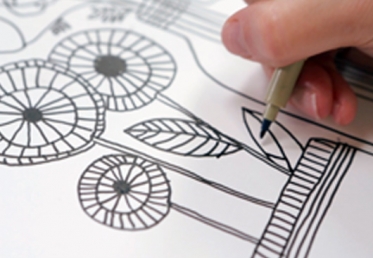Learn Line Drawings In Easy Ways

Are you aware when you first picked up a pen or pencil and started making marks on paper, you made a line. Later you defined forms, created structures, divided a frame, traced contour, created tonal variations and led the eye from one part of a work to another. Yes, the whole of your drawing is nothing but the combination of lines.
Here are a few facts that would guide you to understand the lines and put them at appropriate place in your drawing:
This the drawing made with pure connection of your eyes, hand and brain. The basic purpose is draw scene closely in its natural shape using hand mimics on a paper. You need not to look at the paper when you do this sort of drawings.
Also known with the name Time Drawing and Movement Drawing, this sort of drawing has expressive lines and is completed in very short duration of time. It capture basics of a subject without focusing on detail.
You can complete this drawing with smooth and easily applied mediums such as charcoal sticks, chunky graphite pencils, soft brushes dipped in Indian ink, pastels etc without the use of an eraser.
You don’t have to lift your pen or pencil from the page when drawing these lines.Along with the outlines and internal shapes your pencil have to move back and forth in free-flowing manner. It is better to draw these lines with pen so that you don’t erase it.
You represent shapes, outlines and edges of a scene without color, surface texture etc.
Similar to contour drawing but contains parallel lines which run across the surface of an object. In this type of drawing, you present the illusion of three-dimensional volume entirely with lines.
With the help of a planar analysis drawing using straight lines you simplify the complex and curved surfaces into flat planes. In fact, you represent 3-D objects in 2-D.
You can cut the wires and bend into shapes with plier in order to represent 3-D drawings. You can attach these wires on 2-D frame or a flat surface hang in the air or leave free-standing. These wire sculptures move slightly with the wind, and add an extra element to your work.
Apart from it, you can use line techniques to create special tones. These cab be small dashes, Stippling (dots), Hatching (long, parallel lines on an angle), Cross-hatching (parallel lines at right angles), Small circles, Small circles, Small crosses etc.
Author Bio:
Bob Ransley was born in New England, and has constantly been on the move and has stayed across a variety of locations. He has been living in Maine for the past 6 years now, and his travels have been his inspiration for many of his finest works. He has become America’s most known colorist, due to the vast number of shades that he employs in his paintings. Robert Ransley can be followed on social media at @Twitter , Google+ , Linkedin and Facebook. For more background information on Bob , see his full bio over here.
